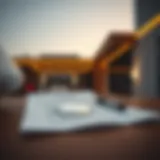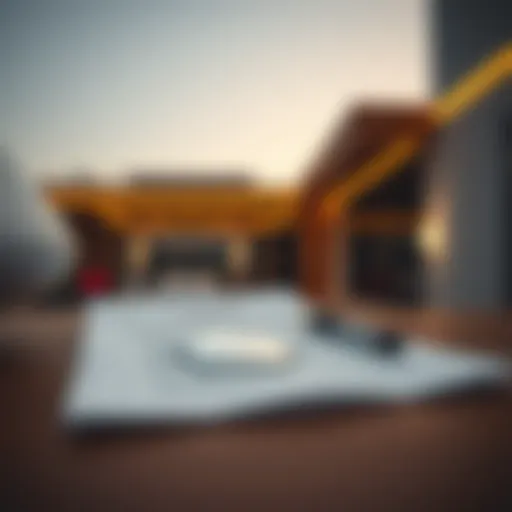Exploring الخليج التجاري: Dubai's Commercial Hub
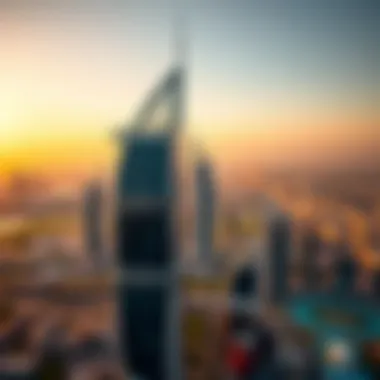
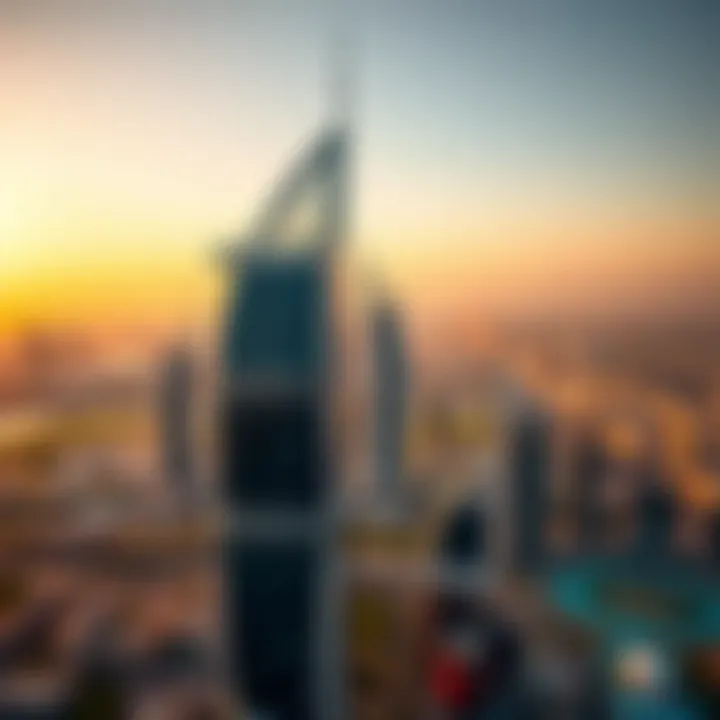
Intro
In the heart of Dubai lies الخليج التجاري, or Al-Ghusaib, a bustling commercial haven where trade, finance, and culture intersect. Renowned for its skyline dominated by modern architecture and shimmering waterways, this district serves as a cornerstone of the emirate's economic landscape. From its historical roots to its present-day dynamism, الخليج التجاري has evolved significantly over the years, shaping not only Dubai's economy but also its global standing.
As one of the most prominent financial districts in the region, الخليج التجاري draws a myriad of investors, homebuyers, and commercial enterprises eager to tap into its rich potential. Understanding this area’s unique characteristics offers insights into its allure, making it an essential topic of exploration.
This article will unfold the layers of الخليج التجاري's significance—containing rich history, current trends, and the future trajectory of real estate within this vibrant locale. Investors and stakeholders will foster a deeper comprehension of buying and selling practices, navigating the intricacies of property transactions, and aligning their strategies with the shifting market landscape.
With this comprehensive overview laid out, let’s delve into the first critical section that examines current market trends followed by forecasts that could define future decisions in this commercial hub.
Prologue to الخليج التجاري
In the landscape of Dubai, الخليج التجاري stands out as a pivotal area that plays a vital role in not just the economy of the emirate but also its cultural and social framework. This region, characterized by its strategic geographical positioning and historical significance, serves as a commercial oasis attracting investors, entrepreneurs, and lifestyle seekers alike. Understanding الخليج التجاري is key for anyone looking to navigate the intricacies of Dubai's dynamic market while also grasping the broader social narratives at play.
Geographical Overview
الخليج التجاري, nestled adjacent to the prominent waters of the Dubai Creek, stretches out like a well-oiled machine in the business sector. The locality is effortlessly accessible via major roads and public transportation, including the Dubai Metro, making it a congested area buzzing with activities. Its proximity to the Dubai World Trade Centre and the Dubai International Financial Centre further accentuates its status as a commercial hub.
The area is designed to cater to both foot traffic and vehicular movement, blending business accessibility with urban aesthetic. The scenic waterfront draws visitors, while the skyline filled with corporate towers resonates with the pulse of trade and commerce. The integration of parks and serene walking routes alongside high-rise developments provide a pleasing contrast, appealing to a diverse group of people—from office-goers to families enjoying weekends. This duality captures the essence of modern urban planning, where work and leisure coexist harmoniously.
Historical Background
The historical winds of الخليج التجاري tell a story of transformation and growth. Once an area dominated by traditional markets and small-scale trade, the region has evolved significantly since Dubai's economic boom in the late 20th century. The emergence of الخليج التجاري can be traced back to the government's efforts to diversify the economy away from oil dependency, positioning the area as a focal point for commercial activity.
Throughout the years, from the establishment of foundational infrastructure to the advent of innovative skyscrapers, الخليج التجاري has seen its identity reshape and adapt to global business trends. Significant developments have included major projects like the Dubai Design District and Dubai Creek Harbour, which have connected the historical trade routes with contemporary commercial practices.
Thus, the historical context of الخليج التجاري not only adds depth to its current standing but also marks it as a testament to the Emirate's ambitious vision and resilience in the face of changing economic landscapes.
In summary, understanding الخليج التجاري opens a window into the ongoing narratives of evolution and opportunity within Dubai, presenting a rich tapestry for investors and stakeholders aiming to engage meaningfully with this vibrant market.
Economic Significance of الخليج التجاري
The economic importance of الخليج التجاري transcends traditional definitions of urban commercial sectors. This area serves as a pivotal point within Dubai’s financial framework, acting both as an engine for growth and a magnet for foreign investment. Its strategic positioning not only reinforces Dubai's existing economic infrastructure but propels it further into the limelight as a premier destination for business and trade at a global level.
Role in Dubai's Economy
The role of الخليج التجاري in Dubai's economy is akin to the keystone in an arch; it holds the structure together. Generating a significant portion of Dubai’s GDP, this district's economic activities encompass diverse sectors, including finance, technology, and tourism. The convergence of local and international corporations has fostered a climate ripe for innovation and growth.
Moreover, الخليج التجاري’s proximity to world-class amenities, such as the Dubai International Financial Centre and the Burj Khalifa, enhances its attractiveness for multinational firms. The continuous influx of businesses indicates a resilient economy that is not just responding to trends but creating them.
"In an increasingly globalized world, الخليج التجاري serves as a beacon for investment and enterprise in the Middle East."
The district also plays a significant role in job creation. Thousands of professionals from diverse fields flock to the vicinity, contributing to a skilled workforce that benefits not just the businesses that operate there, but the wider economy as well. Interestingly, the engaging of Emirati nationals in these economic activities showcases the national efforts toward economic diversification, reducing reliance on oil revenues.
Key Industries and Sectors
Within الخليج التجاري, a tapestry of industries thrives, each woven tightly into the overarching economic narrative. Some of the key sectors include:
- Financial Services: Major banks and investment firms have a significant presence, contributing to the global financial ecosystem.
- Real Estate and Development: This sector is booming, spurred by both local and international investors. High-rise commercial and residential complexes rise continuously, reshaping the urban landscape.
- Tourism and Hospitality: The cultural and recreational amenities attract tourists from around the globe, fueling the service industry.
- Technology and Startups: The drive for innovation has led to the establishment of many tech firms and co-working spaces, making the area a hotbed for entrepreneurs.
- Retail and Trade: With luxury shopping experiences and vibrant markets, retail remains a cornerstone of the economy.
The interplay of these industries illustrates not just a localized economy, but a complex web of global relationships. Investors looking to capitalize on the burgeoning opportunities in الخليج التجاري can find a fertile ground in which to plant their business seeds.
Commercial Development Trends
The landscape of الخليج التجاري is undergoing an exciting transformation, reflecting an era of bold ambitions and strategic planning. As a cornerstone of Dubai’s economic framework, understanding the commercial development trends within this district is essential. Not only do these trends showcase the dynamic nature of the area, but they also provide insights for investors, homebuyers, and other stakeholders aiming to navigate this vibrant market.
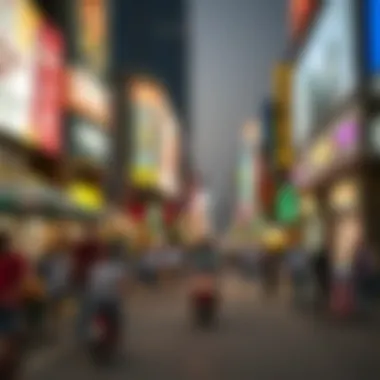
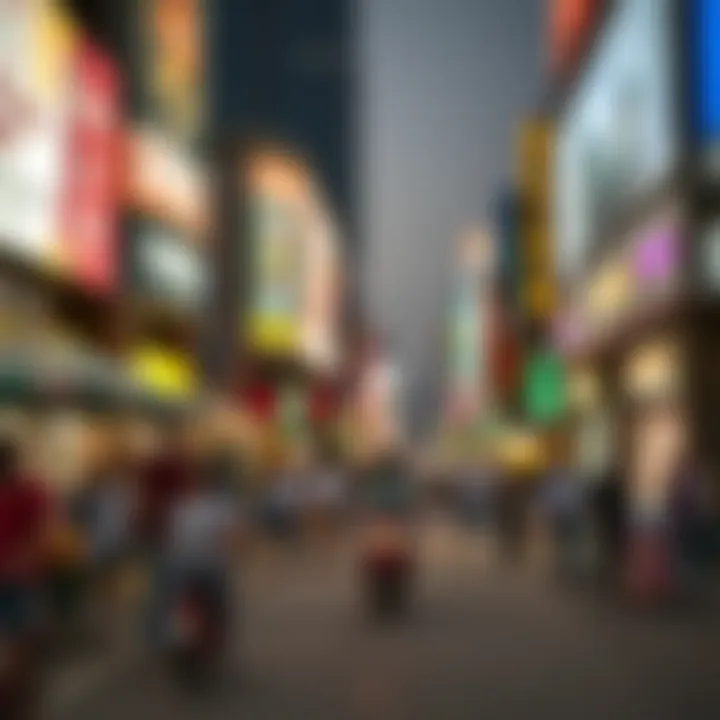
With an ever-increasing demand for commercial and mixed-use spaces, developers have tailored their projects to cater to a diverse range of businesses and lifestyles. This is where good foresight comes into play, as the blending of commercial, residential, and leisure facilities advances the idea of a self-sufficient urban environment.
The drive for modernization is not merely aesthetic; it carries tangible benefits for the local economy. Enhanced infrastructure boosts property values, while new projects can generate significant employment opportunities. For those looking closely, the ebb and flow of these trends reveal a narrative that is energized by innovation and growth.
Infrastructure and Accessibility
Infrastructure and accessibility are crucial components that underpin the commercial viability of الخليج التجاري. This area, often referred to as the heartbeat of Dubai's economic activity, relies on robust infrastructure to support businesses, residents, and visitors alike. It is not just about having roads and buildings; it’s about creating a seamless network that facilitates commerce and enhances the quality of life.
Transport and Connectivity
Transportation is the lifeblood of any commercial district, and الخليج التجاري is no different. The array of public transport options available works to connect this vital area with the rest of Dubai and beyond. The Dubai Metro, particularly the red line, runs efficiently through the area, making it exceedingly easy for commuters and tourists to access various parts of the city at favorable prices.
Besides the metro, taxis and ride-hailing services are widely utilized in and around الخليج التجاري. Recent enhancements to the bus system have also helped in providing a more integrated experience for residents and visitors, many of whom juggle work, shopping, and leisure activities throughout their day.
Another noteworthy consideration is the arterial road network. Major roads such as Sheikh Zayed Road and Al Khail Road ensure that traffic flows smoothly, facilitating quick transportation of goods and people. This connectivity is a significant factor that attracts businesses and helps them flourish.
"Dubai's infrastructure is not just built to last; it is built to accommodate the future needs of its diverse and growing population."
Urban Planning and Design
Urban planning and design in الخليج التجاري highlight careful thought and consideration of both aesthetics and functionality. The layout of the commercial hub reflects modern principles of urban development, with a focus on creating green spaces and pedestrian-friendly areas. This approach is not only attractive but promotes a healthier lifestyle, which is becoming increasingly important in urban environments.
Key projects often feature mixed-use developments that blend residential, commercial, and recreational spaces, allowing for a vibrant community life. Skyscrapers like the Dubai Tower rise impressively, showcasing architectural innovation while optimizing office space. The choice of materials and building technologies also underscores sustainability, aligning with Dubai’s goals for reducing carbon footprints.
Additionally, the integration of advanced technologies into the urban fabric—such as smart traffic systems and pedestrian bridges—improves not only accessibility but also the overall user experience. These design elements contribute to making الخليج التجاري not just a place for business, but a desirable location to live and play.
Investing in this hub means engaging with a dynamic environment that is always on the move, adapting to meet the needs of its people.
Real Estate Landscape
The real estate market within الخليج التجاري is a thriving entity, representing both an attractive investment opportunity and a reflection of Dubai's broader economic narrative. This distinctive location not only encompasses vibrant commercial spaces but also offers a range of residential options, catering to a diverse demographic. The importance of understanding the architectural fabric and the socio-economic dynamics of this vibrant district cannot be overstated.
Real estate in الخليج التجاري is not just about properties; it's about carving a niche in a high-stakes environment characterized by rapid growth and innovation.
Types of Properties Available
Within this bustling hub, an array of property types is found. From opulent skyscrapers to more modest yet stylish apartment complexes, each property offers something unique to potential buyers and investors. Commercial properties dominate the landscape, featuring offices, retail spaces, and mixed-use developments. Many high-rise buildings are designed to attract global businesses, creating a dynamic workplace that thrives on collaboration and innovation.
- Luxury Apartments: Ideal for expatriates and professionals seeking premium living spaces, typically offering unmatched views of the waterfront.
- Commercial Offices: These spaces cater to corporations and startups alike, providing modern amenities and flexible leasing options.
- Retail Outlets: Burgeoning brands are establishing their presence here, aligning themselves with the luxury shopping experience that Dubai is known for.
This mix brings a palpable energy, encouraging interaction and a cosmopolitan lifestyle, perfect for those looking to be in the thick of Dubai's financial action.
Market Dynamics and Trends
The real estate market dynamics within الخليج التجاري are influenced heavily by Dubai's robust economy and forward-looking policies. Recent trends indicate a strong demand for eco-friendly buildings, reflecting a global shift towards sustainability. Investors are increasingly looking at properties that not only promise returns but also incorporate innovative designs and energy-efficient solutions.
Additionally, fluctuating market conditions have created pricing adjustments, making now a potentially advantageous time for buyers to enter the market. Factors such as:
- Government initiatives aimed at boosting foreign investment.
- Development of infrastructure enhancing connectivity and accessibility.
- A steady influx of residents from various parts of the world, drawn by job opportunities and lifestyle benefits.
These elements contribute to a landscape where informed decisions can yield significant rewards. As this area continues to evolve, keeping abreast of the underlying trends is essential for anyone looking to engage with the market effectively.
"The ever-evolving character of الخليج التجاري presents a fascinating opportunity for those prepared to take the plunge into Dubai's dynamic real estate market."
In summary, the real estate landscape of الخليج التجاري is not just about bricks and mortar; it's a sophisticated interplay of market trends, investor sentiment, and the unwavering momentum of Dubai's ambition to be a leader in global commerce.
Investment Opportunities
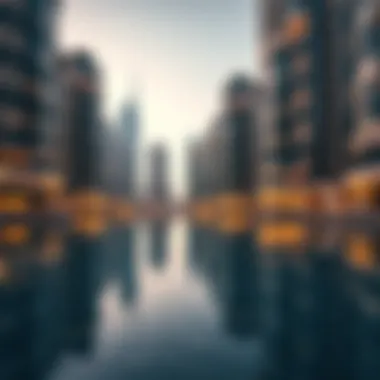
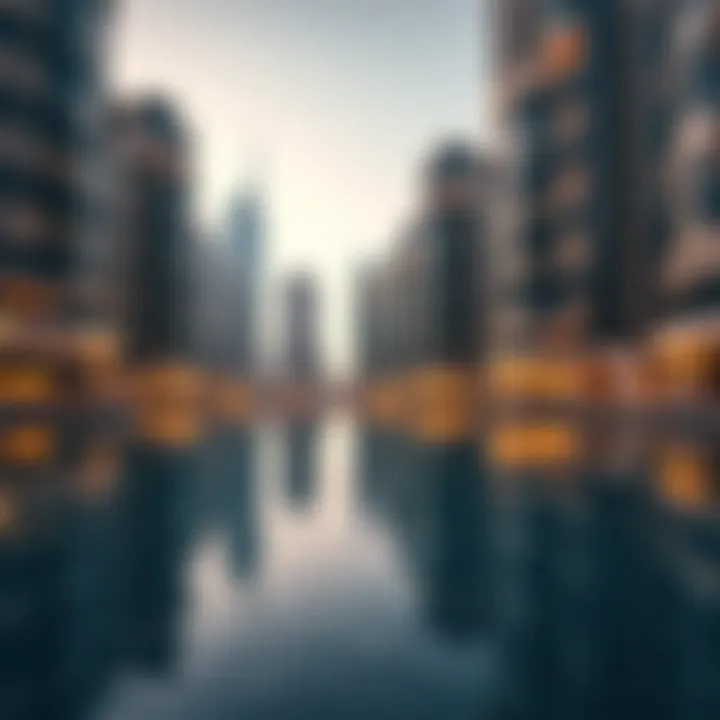
The importance of exploring investment opportunities within الخليج التجاري can’t be overstated. As a crucial commercial and financial district of Dubai, it offers a wealth of options for various types of investors. From local businesses looking to expand to foreign investors seeking lucrative properties, the area presents a unique set of benefits and considerations that are imperative to understand. The growing economic vibrancy of Dubai, coupled with its strategic geographical location, positions الخليج التجاري as a hotspot for investment.
Real estate ventures in الخليج التجاري are attractive for several reasons. Firstly, the area has witnessed remarkable growth in both infrastructure and commercial development, leading to an increasing demand for real estate solutions. Furthermore, the proximity to key transit routes and leisure destinations enhances its appeal for potential tenants and buyers. Investors often find that the combination of high occupancy rates and constant demand contributes to steady rental yields.
The potential for high returns on investment is indeed enticing, but one must approach these opportunities with a clear understanding of the market dynamics. Investors need to recognize the specific sectors poised for growth, which can vary from commercial office spaces to luxury residential properties. Navigating this landscape entails thorough research and strategic planning, which can be the difference between a lucrative investment and a financial setback.
Emerging Investment Areas
Within الخليج التجاري, certain sectors emerge as promising areas for investment. Notably, the retail and hospitality industries are on an upward trajectory, linked closely to the influx of tourists and residents. With major international brands setting up shop, the demand for retail space is set to skyrocket. Additionally, the establishment of new hotels and restaurants reflects a strong inclination towards the hospitality sector, which offers excellent returns for investors willing to venture into this arena.
Another promising area is technology and innovation hubs. As Dubai strives to be a leading tech hub in the region, entrepreneurial ventures in tech startups find a fertile ground in الخليج التجاري. Investors focusing on office spaces tailored for tech companies can find a growing market, as innovation continues to drive economic diversity in the area.
Furthermore, considering the luxury segment, high-end residential units cater to affluent investors. More buyers are now looking for properties that not just serve as living spaces but also as status symbols. This shift in consumer behavior opens new avenues for real estate developers and investors alike. As this trend evolves, the demand for luxury amenities and stunning views will likely push prices upward, making it an enticing prospect.
Risk Assessment and Management
Every investment carries risks, and الخليج التجاري is no exception. However, proper risk assessment and management can mitigate these risks effectively. One major consideration involves market volatility. The dynamic nature of the real estate market means fluctuations can arise due to changes in economic conditions or regulatory changes. Investors must be astute, monitoring trends and economic indicators that could signal a downturn or growth phase.
Additionally, regulatory challenges can pose risks. Dubai's real estate sector is governed by a complex set of laws and regulations that can affect property ownership and investment opportunities. Engaging with local experts who understand these regulations can save investors heaps of trouble in the long run. Regular consultations can also clarify any ambiguities regarding new laws that might emerge.
Investors should also consider financial health when deciding on investments. It’s not just about selecting the right property, but also evaluating how much capital to allocate, understanding return rates, and planning for contingencies. Creating a diversified portfolio can help cushion against unpredictable market behavior.
It's essential for investors to remain vigilant and proactive in their approach. A well-planned strategy accompanied by a clear understanding of the risks allows for both informed decision making and successful navigation in the bustling market of الخليج التجاري.
Regulatory Framework
The regulatory framework surrounding الخليج التجاري is pivotal for maintaining its status as a vibrant commercial epicenter in Dubai. It sets the parameters within which investors, developers, and homebuyers operate, shaping the dynamics of the property market and ensuring that growth is both sustainable and controlled. Understanding these regulations is crucial for anyone looking to engage in real estate transactions or investments in this area.
Property Ownership Laws
In Dubai, property ownership laws have evolved significantly over the years. The laws govern how both local and foreign investors can purchase and own property.
- Freehold Areas: Foreigners can buy property in designated freehold areas, which are mostly located in key developments across الخليج التجاري. This ownership type grants full rights, meaning investors can sell or lease properties as they wish.
- Leasehold Areas: In contrast, a leasehold agreement allows foreigners to lease property for a fixed duration, usually up to 99 years, without transferring ownership.
Key Considerations:
- Understanding the difference between freehold and leasehold is essential.
- Knowing the specifics on transfer fees, registration fees, and taxes is equally crucial, as these can add significant costs to your investment.
Investment Regulations
Investment regulations are put in place to protect the interests of both investors and developers while promoting a robust real estate market. These regulations can touch on many aspects:
- Foreign Direct Investment (FDI): Certain laws allow foreign entities to invest in property without restrictions, subject to established regulations. This factor enhances the attractiveness of الخليج التجاري as an investment destination.
- Regulatory Bodies: Institutions like the Dubai Land Department (DLD) and the Real Estate Regulatory Agency (RERA) serve as key players in enforcing these laws. They offer legal guidance and establish clear processes for buying, selling, and renting properties.
Why It Matters:
- A strong regulatory environment not only protects investors but also ensures the integrity of the market. If laws are unclear or inconsistent, it can deter potential investments.
"A solid regulatory framework is like the backbone of real estate investment, holding the structure together and ensuring it stands tall against market fluctuations."
The balance of facilitating investments while instituting checks and balances is delicate yet essential. As الخليج التجاري continues to develop, staying abreast of these regulations will prove necessary for anyone looking to navigate its vast real estate waters effectively.
Cultural and Lifestyle Aspects
The cultural and lifestyle aspects of الخليج التجاري play a pivotal role in shaping the identity of Dubai's commercial hub. This area isn't just about brick-and-mortar buildings; it embodies a vibrant mix of cultures coming together to create a unique urban tapestry. Investors, homebuyers, and developers often overlook how these cultural nuances can affect their decisions in this bustling environment.
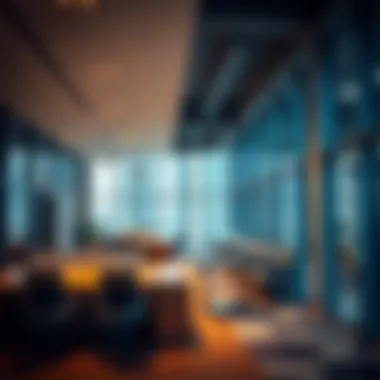
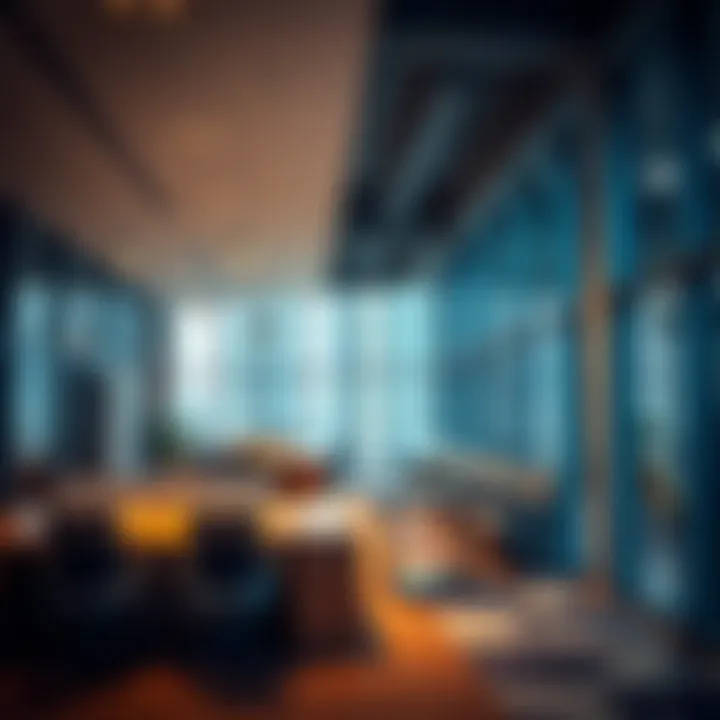
Community and Residential Areas
Living in الخليج التجاري means experiencing the hustle and bustle of one of Dubai's most dynamic neighborhoods. This locale showcases a blend of upscale living spaces and more modest residences, catering to a diverse population. For instance, luxury apartments in fully-equipped skyscrapers provide stunning views of the creek, while smaller, family-oriented developments are tucked into quieter corners.
Such variety attracts a mix of residents: from expats working in multinational companies to families seeking a vibrant community atmosphere.
- Property Types
- Waterfront apartments offering impressive vistas.
- Gated communities that ensure safety and serenity.
- Affordable housing options for young professionals.
In recent years, numerous projects have sprung up, breathing new life into the area. The completion of residential complexes like the Dubai Creek Residences and the waterfront developments has made the appeal even greater for those looking to settle down in a culturally rich environment. Moreover, the presence of community centers, parks, and other amenities fosters a sense of belonging and unity among residents.
Leisure and Recreational Facilities
In terms of leisure activities, الخليج التجاري doesn’t shy away from catering to its residents' lifestyle choices. The availability of a myriad of recreational facilities makes this area stand out. From parks to entertainment venues, there’s always something to do.
- Popular Spots
- The Dubai Creek Park offers sprawling green spaces for picnics and family outings.
- Numerous cafes and restaurants lining the waterfront serve dishes from around the world, reflecting the community's multicultural flair.
- Fitness enthusiasts can enjoy jogging trails and outdoor gyms scattered throughout the district.
For community bonding, events are held regularly, such as cultural festivals and art exhibitions. These activities serve as a platform for showcasing the talents of local artists while fostering interaction among residents of different backgrounds.
"The essence of living in الخليج التجاري is not just about the place; it’s about the experiences shared among its inhabitants, making it a truly unique urban oasis."
This synergy between leisure, community, and culture enhances the overall appeal of the area, making it an attractive option for potential investors and homebuyers alike. Understanding these cultural and lifestyle aspects enables stakeholders to appreciate the true value that الخليج التجاري holds in Dubai's landscape.
Challenges and Opportunities
When contemplating the landscape of الخليج التجاري, it becomes increasingly clear that understanding the challenges and opportunities within this bustling commercial hub is essential for stakeholders. This area not only serves as the focal point of commerce and trade in Dubai but also houses complexities that require astute navigation.
Market Challenges
The challenges faced by المستثمرين (investors) and businesses in الخليج التجاري can be multifaceted. Some notable ones include:
- Regulatory Hurdles: Navigating the various laws and regulations in the UAE can be akin to treading through proverbial muddy waters. Property ownership laws, for instance, can vary significantly and pose confusion for both local and foreign investors.
- Market Saturation: With a surge of developments and commercial projects, certain sectors within الخليج التجاري have begun to experience saturation. This can lead to heightened competition, driving prices down and making it tougher for new players to establish themselves.
- Economic Fluctuations: The real estate and commercial sectors are not immune to economic fluctuations. With global economic uncertainties and fluctuations in oil prices, Gulf economies could witness changes impacting investment behavior and market stability.
"The potential for lucrative returns often comes wrapped in a layer of challenges that can test the resolve of even the most seasoned تسثتمار (“investors”)."
Opportunities for Growth
Despite the aforementioned hurdles, الخليج التجاري presents ample opportunities for growth and expansion. These opportunities are integral for those considering long-term investments and strategic positioning. Significant avenues include:
- Diversification of Investment: The shift in Dubai's economy towards technology and innovation opens doors for investment in new-age businesses. Entrepreneurs have a robust playground to explore ideas that blend commerce with digital solutions.
- Sustainability Initiatives: As global trends lean towards sustainable practices, there’s a significant opportunity for projects that prioritize eco-friendly designs and energy-efficient buildings. Such initiatives appeal to investors looking to align with modern market expectations.
- Cultural and Leisure Development: With the influx of tourists and expatriates, businesses that cater to lifestyle and cultural experiences can thrive. From fine dining to unique recreational facilities, the demand for novelty and quality provides a rich ground for growth.
In light of these opportunities, investors and other stakeholders in الخليج التجاري have the chance to leverage their investments strategically, turning potential challenges into pathways for innovation and prosperity.
Closure and Future Outlook
As we wrap up our examination of الخليج التجاري, it becomes clear that this pivotal area isn’t just a hub for commerce; it’s a microcosm of Dubai’s rapid evolution. The commercial zone plays a crucial role in shaping the economic landscape of the city. As investors and stakeholders look ahead, several key elements surface that underscore the importance of considering both the current state and the future trajectory of this region.
Summary of Key Points
In pinpointing critical aspects of الخليج التجاري, we can spotlight factors such as:
- Strategic Location: Positioned along the coastline, it serves as a gateway to international trade.
- Diverse Economic Sectors: This area accommodates a mix of retail, hospitality, and corporate sectors, enhancing its depth.
- Investment Potential: Opportunities abound, particularly in real estate and emerging industries, attracting both local and international investors.
- Infrastructure Investments: Ongoing developments in transport and urban design promise to boost accessibility and overall functionality.
- Regulatory Support: The governmental framework aims to support sustainable growth and attract foreign investments.
Each of these points underlines why the region remains a focal point for stakeholders keen on capitalizing on Dubai’s booming economy.
Final Thoughts
Looking ahead, the resilience of الخليج التجاري can’t be overstated. As market dynamics shift, staying informed about regulatory changes and emerging trends will be essential for all parties involved. Investments in infrastructure and technology are likely to create new possibilities, while the focus on sustainability will shape future developments.
Given the ever-changing economic climate, it is prudent for investors and developers to keep one ear to the ground, listening for new opportunities that arise. Indeed, the future appears bright, yet it will necessitate a proactive approach to fully harness the potential of this dynamic locale. With the right strategies, الخليج التجاري can not only thrive but also redefine Dubai’s commercial landscape.
"As the wheels of commerce turn in الخليج التجاري, adaptability will be the key to success."
This conclusion serves as a reinforcement of the potential present in الخليج التجاري. Investing here is not just about land or buildings; it's about becoming part of an ecosystem characterized by continuous growth and innovation.
